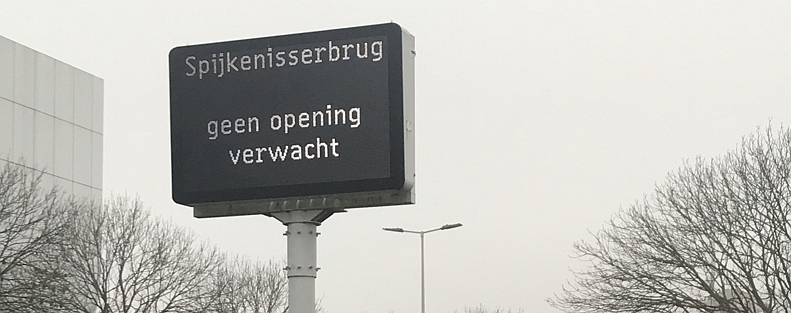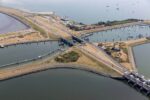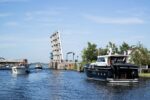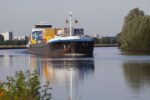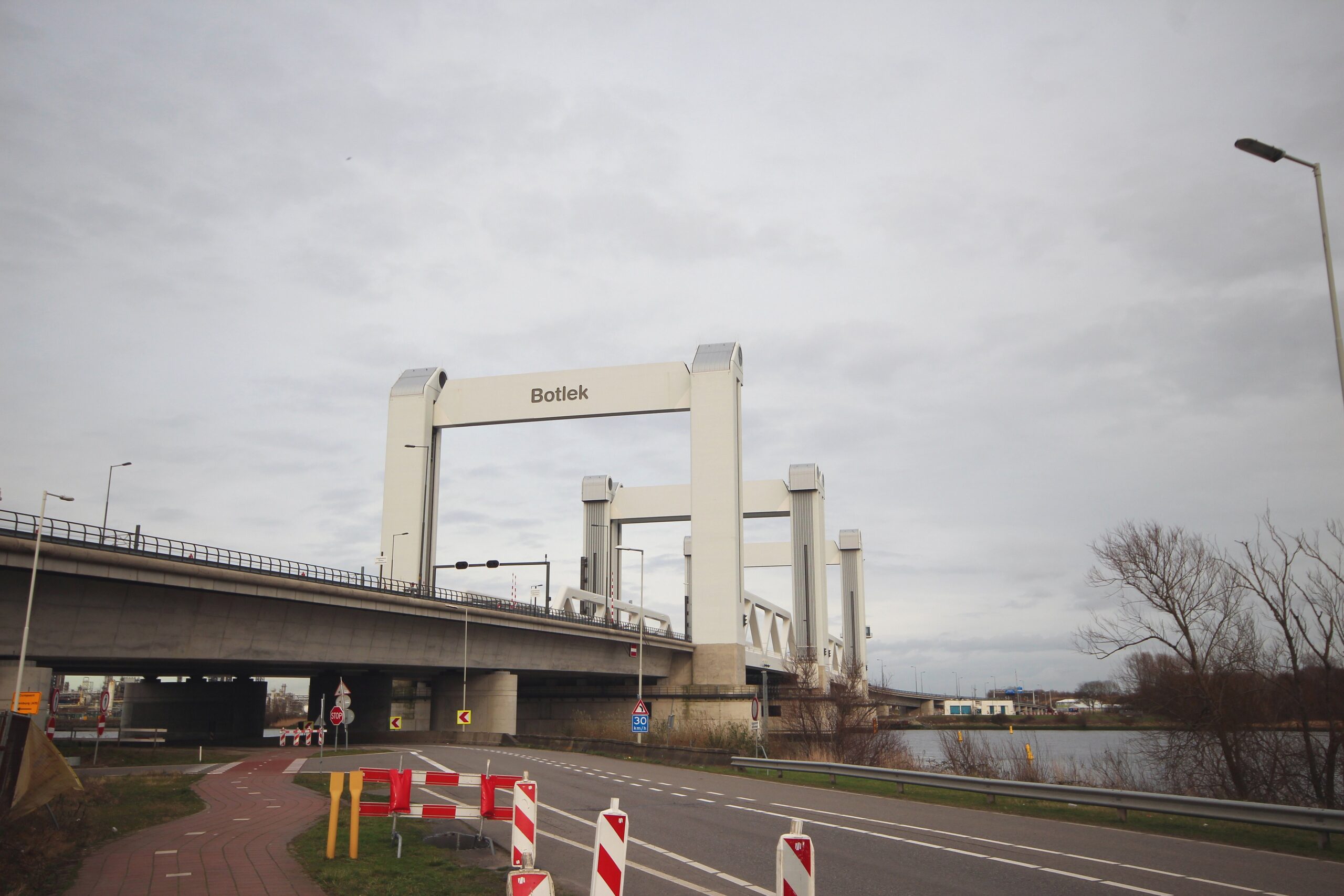
Bridge Opening Predictor
Motorists who are driving from Spijkenisse to Rotterdam or vice versa have to cross the Oude Maas river. There are three options: Spijkenisserbrug, Botlekbrug or the Botlektunnel. As bridges sometimes open to let shipping traffic through, many motorists take the Botlektunnel during rush hour. The result is that traffic in the tunnel is often congested, even when both bridges are available. The Bridge Opening Predictor (Brugopening Voorspeller, BOV) advises motorists of expected bridge openings on dynamic route displays, so that they can make informed route choices.
Reliable predictions
Bridges are places where road traffic and shipping traffic meet. An open bridge can cause considerable delays for vehicles travelling to or from Spijkenisse – twenty minutes is no exception. On the other hand, shipping traffic cannot be kept waiting; the bridge opens whenever this is necessary for shipping vessels. The BOV provides motorists with relevant information so that they can use the bridges when these are available, instead of choosing the tunnel as a matter of course.
Normally dynamic displays only indicate that a bridge is opened. The BOV takes it one step further. The system also indicates that no bridge opening is expected, so motorists can take the bridge knowing that they will not have to wait before an open bridge. Because of this, the BOV is a great illustration of TNL’s approach: taking a different view in order to come to an effective solution.
Reliable information for motorists
There are multiple shipping routes in the area. In the case of some vessels, the system does not know in advance what route they are going to take. Other ships cannot be identified with certainty, so that the system is unable to determine the height of the vessel – information that is required to determine whether or not the bridge must be opened. And yet the BOV’s predictions are 99 % accurate, more than enough to be able to provide reliable recommendations to motorists. Because the BOV works with predictions, the system is able to generate recommendations to motorists well in advance. Bridge operators cannot do this, because they are only activated once the ships have approached the bridge too closely, so that any warning to road traffic would come too late.
Multiple sources of information
Our vision of predictive algorithms is that they should use as few logical steps as possible to generate as high a degree of reliability as possible. The BOV uses multiple sources to predict bridge openings:
- AIS (Automatic Identification System) – The AIS contains information about the identity and position of vessels. Because the AIS data is privacy-sensitive, it is anonymized and retained for six minutes at the most.
- BGV (Blauwe Golf Verbindend) – BGV provides information about current bridge statuses.
- Vaarweginformatie.nl – This website provides current information to skippers about congestion and delays on the waterways and surrounding bridges. The site also contains a data set with the navigation sectors of navigable waterways for professional and recreational shipping.
The Bridge Opening Predictor calculates a prediction for both bridges every ten seconds. Three questions are important in making this calculation:
- Which ships are sailing towards the bridge?
- Which of these ships requires a bridge opening?
- When will these ships arrive at the bridge?
The BOV supplies the time and duration of the bridge opening to the National Road Traffic Data Portal (NDW) via BGV. NDW is the source of the recommendations that are then presented to road traffic on the dynamic roadside route displays.
Results of pilot
The results of the pilot are positive. A study has shown that almost half of motorists reported using the bridge more often thanks to information provided by the BOV. A number of respondents suggested that the system could be improved by also providing an expected time-to-opening.
